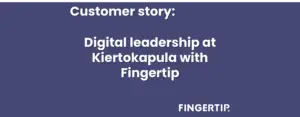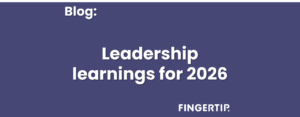The world is currently in a state of widespread uncertainty with social and political instability. This affects employees and employers alike. Employees fear for their jobs as companies do what they can to stay afloat. Employers are redefining roles and cracking down on wasteful processes to try and get the stalling productivity back on the rising trend.
Younger generations are more likely to hop to another company if the values and leadership don’t align with their own world view, or if they feel not valued or invested in. Employers also face a ton of difficult decisions with regards to layoffs and strategy. Everyone needs to participate in making compromises and meeting in the middle to reach a mutually satisfying solution.
Leaders are in the difficult position of balancing and communicating the business needs with the employee needs.
We are on the verge of losing the remaining trust between the employers and employees. Trust that the employers are accommodating the needs of their employees and not just shareholders, and trust that the employees want to act in the company’s best interest.
To revitalize and secure this trust, companies are investing in the Employee Experience (EX), that can help the individual feel personally met. So far very few are accommodating the needs of the leader to provide a better Leader’s Experience, making them one of the most neglected stakeholder in the equation. But that is about to change.
What is the employee experience?
In essence, the employee experience is like customer experience but for an employee. It means the person’s experience in all stages of employment from job search to resignation. Studies show, that if the experience is pleasant and engaging, companies grow up to 2.3 times faster than average. They also suffer less from employee turnover and can thus save in recruiting costs.
Modern hybrid work has significantly impacted the employee experience, and the key new features in the employee experience following the digital transformation are as follows:
- Flexibility and Autonomy: Hybrid work has granted employees the freedom to work from diverse locations.
- Digital Collaboration: Employees have increasingly relied on digital tools, such as Microsoft Teams, to connect with colleagues and collaborate on projects.
- Technological Hurdles: Adapting to new technologies and software for remote collaboration has been a steep learning curve for some employees.
- Work-Life Balance: Maintaining work-life balance can be challenging as the boundaries between work and personal life blur.
The changes have had both positive and negative outcomes. People have more freedom, but they need to be more self-directed and ensure their own alignment. Working from anywhere and anytime with smart devices is easier than ever, but can create a sense of always-on, and many have a hard time switching off from work, which can have dire consequences for their mental health.
From a leader’s perspective this is mostly worrying. Their main goals in setting the direction of their employees and helping them succeed. However, monitoring and evaluating their well-being and performance has become much harder without the traditional office where everyone works.
Some companies, like Microsoft, use employee experience platforms to better understand the needs and preferences of their employees, which supports their leaders in building trust and inclusion, and create metrics of employee well-being in the process.
The Leader’s Hybrid Experience
When we discuss the specific employee experience of someone in a leadership role, we are talking about the leader’s experience. The leader’s experience differs from the employee’s experience in modern hybrid work in terms of the degree of responsibility, communication, and personalization that they entail.
With digital communication tools such as Microsoft Teams the emotional distance between leaders and employees is longer, which makes leading harder.
The shift to modern hybrid work has left many leaders struggling to get a hold of their employees, and unable to remove the obstacles that prevent their employees from thriving. A new type of leader’s experience is required, and there is no better alternative than once again turning to digital platforms.
Leaders must navigate a set of challenges in this hybrid landscape:
- Leading in a remote setting: Leaders must cultivate trust, set clear expectations, and provide guidance without physical presence.
- Leading diverse teams: Hybrid work often means managing teams spread across different locations, cultures, and time zones. This diversity can be a source of strength but also demands adaptive leadership.
- Adapting to Digital Transformation: Leaders must embrace digital tools and technology to stay connected with their teams. This shift necessitates a rethinking of leadership practices and styles.
- Balancing Employee Well-being: As leaders, the responsibility to safeguard employee well-being is paramount. They must recognize signs of burnout, implement strategies for wellness, and ensure that their team members are not overburdened by the demands of remote work.
Creating the trust required for honest and efficient leadership while keeping people motivated and engaged is a huge challenge leaders face in the current state of modern work, which leadership platforms like Fingertip solve.
Empower hybrid leaders with digital tools
Hybrid work has reshaped the workplace experience, bringing both challenges and opportunities for employees and leaders. They need to develop new skills, mindsets and behaviors to regain mutual trust. New types of communication and collaboration are required to finally get productivity back on the rise.
To succeed in this new landscape, leaders must adapt their leadership styles, emphasizing clear communication, trust, and well-being. Understanding the contrasts between the employee’s and leader’s experience is the first step toward achieving a harmonious and productive work environment in the age of hybrid work.
Fingertip is a modern digital leadership platform that has been created with focus on leaders and leadership from the beginning. It helps engage employees without interruptions and fosters a culture of shared accountability. It also gives leaders the insight they need to find the bottlenecks and obstacles remote workers are facing and empowers them to tackle them head on.
It provides modern organizations the leader’s experience they need to navigate in modern work.



